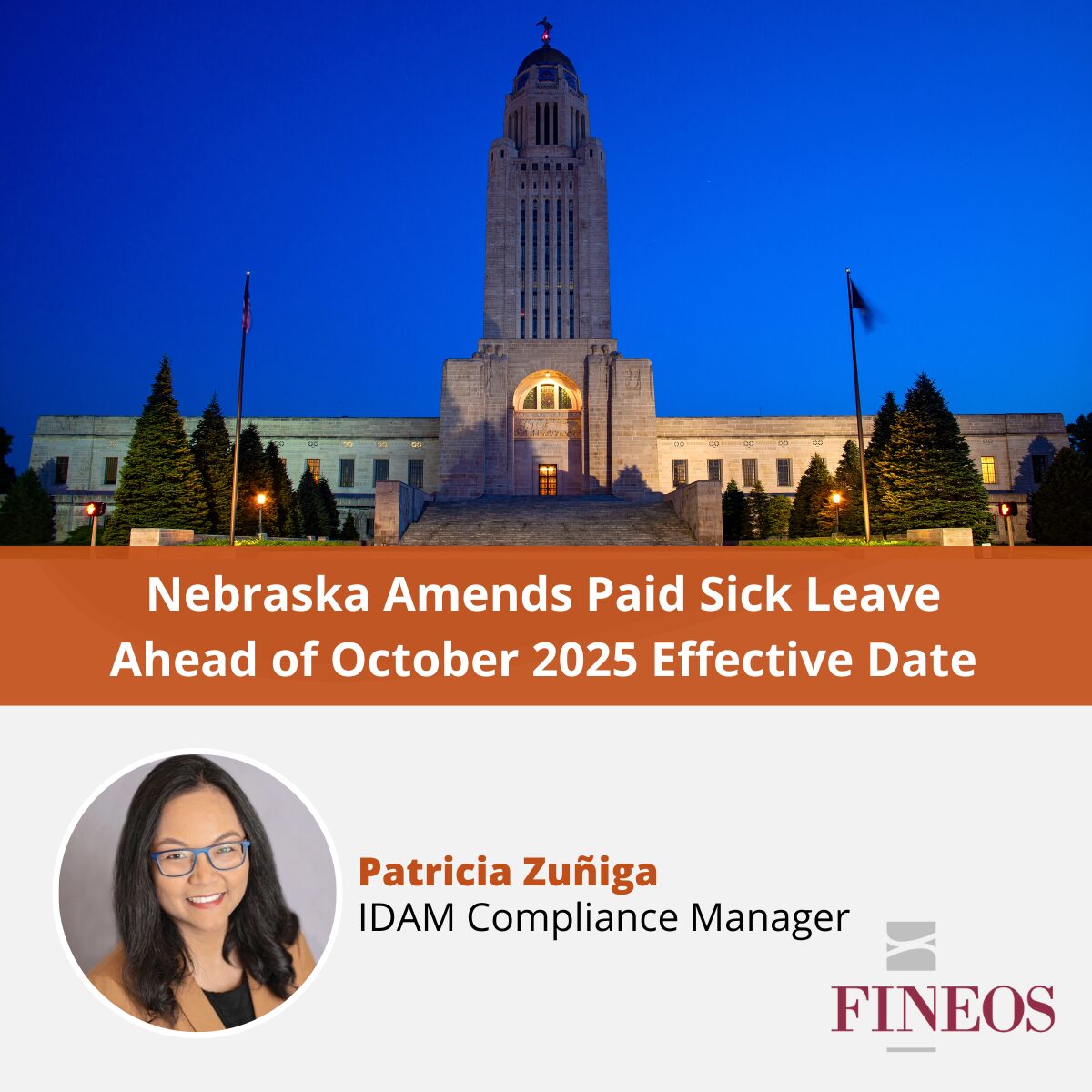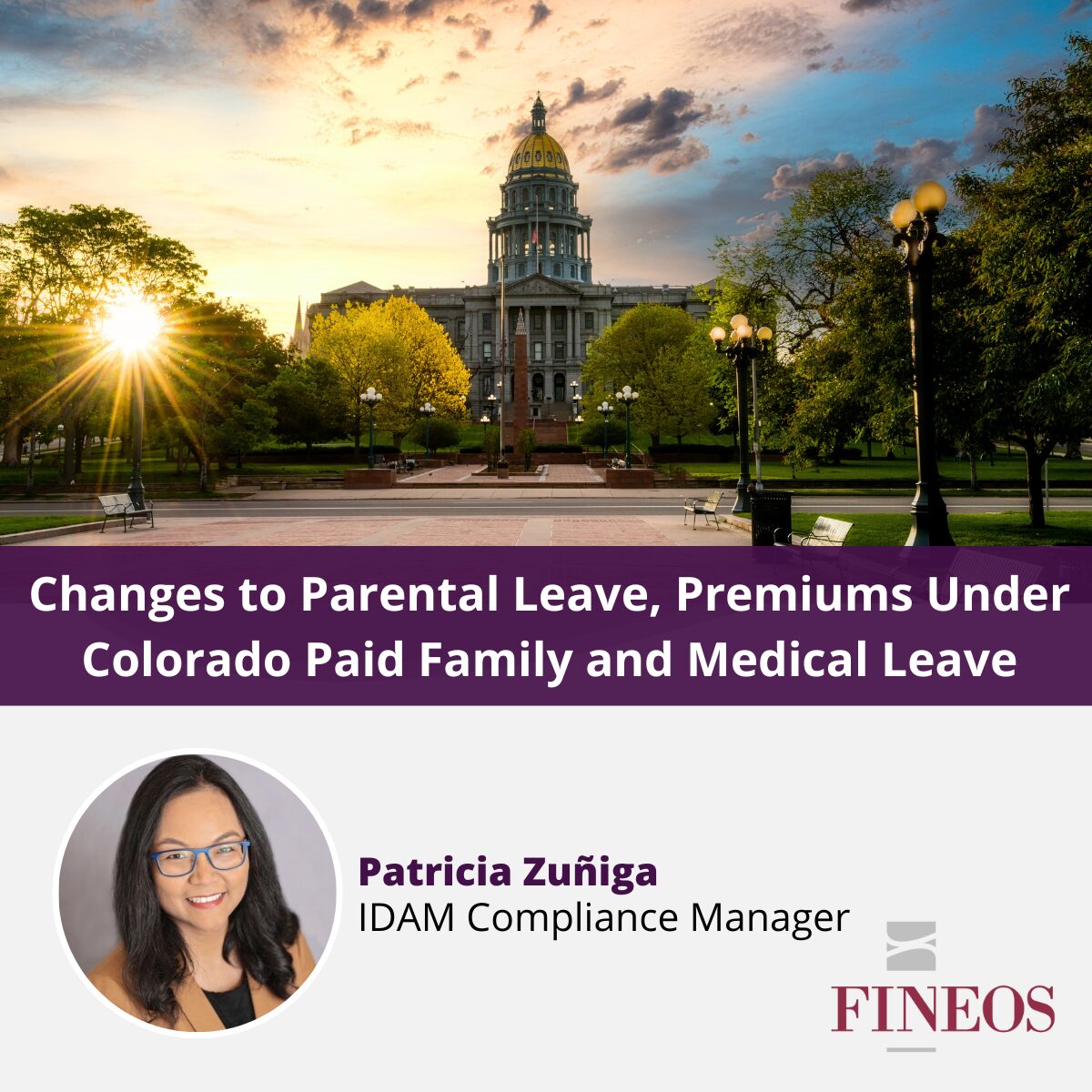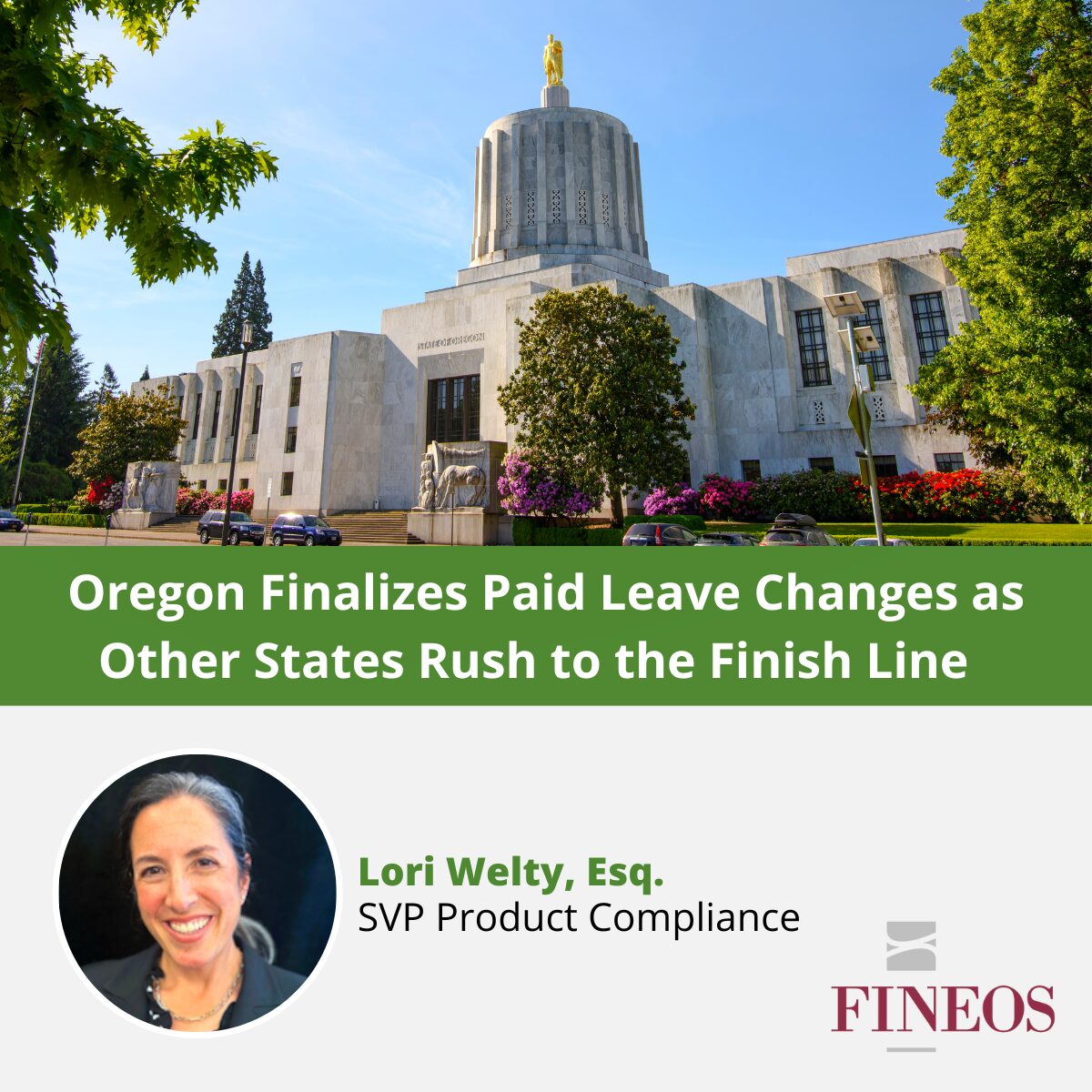Last week, Gov. Tim Walz signed H. F. 2 into law, creating a paid family and medical leave (PFML) program in Minnesota. Contributions to the program will begin on January 1, 2026, and employees may begin receiving benefits on the same day. The initial funding for the program is expected to come from the state’s budget surplus of approximately $670 million. This new law also allows for private plans. Read on for more details about this new statutory PFML program.
Covered Employers: Most employers and governmental entities that employ at least one individual in the state must provide PFML to eligible employees through the state-run program or a private plan.
Eligible Employees: To be eligible, employees must have earned at least 5.3% of the state’s average annual wage ($66,924 for 2023) during the employee’s base period. Employees of the federal government, self-employed individuals, independent contractors, employees covered under the federal Railroad Unemployment Insurance Act, and certain seasonal employees are not covered. However, self-employed individuals and independent contractors may opt into the program.
Covered Leave Reasons: Minnesota PFML allows employees to take leave for:
- Medical leave: an employee’s own serious health condition
- Family Care leave: caring for a family member with a serious health condition and qualifying exigency leave
- Bonding leave: bonding with a child during the first year after the birth, adoption, or placement of the child
- Safety leave: leave from work because of domestic abuse, sexual assault, or stalking of the applicant or applicant’s family member.
Amount of Leave: Each benefit year, an employee can take a maximum of 12 weeks of leave for their own serious health condition, and 12 weeks of leave for family/bonding/safety leave, up to a maximum of 20 weeks of leave in a benefit year in combination of all allowable leave reasons. Private plans can define a benefit year according to the four methods permitted under the FMLA, i.e. calendar year, fixed year, rolling forward, or rolling backward.
Covered Family Members: Minnesota PFML permits an employee to take leave for the following relationships:
- a spouse or domestic partner
- a child, including a biological, adopted, or foster child, a stepchild, or a child to whom the applicant stands in loco parentis, is a legal guardian, or is a de facto parent
- a parent or legal guardian of the applicant
- a sibling
- a grandchild
- a grandparent or spouse’s grandparent
- a son-in-law or daughter-in-law; and
- an individual who has a relationship with the applicant that creates an expectation and reliance that the applicant care for the individual, whether or not the applicant and the individual reside together.
Premiums: Employers must pay premiums to the state quarterly, unless they have a private plan. Beginning January 1, 2026, the premium rates will be:
- For employers participating in both family (family care, bonding, and safety leave) and medical benefit programs: 0.7%
- For employers participating in only the medical benefit program and with an approved private plan for the family benefit program: 0.4%
- For employers participating in only the family benefit program and with an approved private plan for the medical benefit program: 0.3%
These rates may be adjusted if an independent actuarial study to be submitted to the legislature no later than October 31, 2023, finds that these rates are not actuarially sound.
Employers and employees are each responsible for 50% of the annual premiums unless the employer chooses to cover the entire amount. Employers with fewer than 30 employees can invoke a small business wage exclusion to lower the premiums due. The rates will be adjusted by the state beginning January 1, 2027, and by July 31 of each following year.
Benefit Calculation: The weekly benefit amount is the sum of: (1) 90% of the employee’s average weekly wage (AWW) equal to or below 50% of the state’s AWW; (2) 66% of the employee’s AWW that exceeds 50% of the state’s AWW up to 100% of the state’s AWW; and (3) 55% of the employee’s AWW that exceeds 100% of the state’s AWW, up to a maximum weekly benefit amount of the state’s average weekly wage ($1,287 for 2023). The weekly benefit amount will be prorated for hourly workers if the employee uses paid sick leave, paid vacation leave, or other paid time off that is not considered a supplemental benefit payment, or for intermittent leave.
Type of Leave: Employees can take continuous or intermittent leave, though leave must be taken in a minimum of a full workday. An employer can, but is not required to, limit intermittent leave to 480 hours in any 12-month period. To qualify for benefits, an employee must have a single qualifying event of at least seven days, consecutive or non-consecutive (for intermittent leave), except for bonding leave, which need not meet that threshold. Once the seven-day period has been met, benefits are payable for those seven days, and any subsequent leave taken for the same reason.
Concurrency: An employer may require state PFML leave to run concurrently with leave under the federal FMLA, if the leave meets the requirements of both laws. An employer cannot require the use of accumulated sick, vacation, or personal time before accessing family and medical leave benefits, but an employee can choose to do so. An employer can offer supplemental benefit payments to their employees, but they cannot receive a total amount that would exceed their usual wages.
Employer Notice: Employers must post and provide to each employee a MN PFML workplace notice 30 days after the time of hire, or 30 days before premium collection begins, whichever is later. The required workplace notice must be in English and each language other than English which is the primary language of five or more employees or independent contractors of that workplace. The employee must acknowledge receipt of the information or sign a statement indicating the employee’s refusal to sign such acknowledgment. If an employer has failed to provide notice to the employee as required, the employee is not required to comply with the PFML law’s notice requirements.
Employee Notice: An employee must provide notice of their intention to take leave to their employer 30 days in advance, if known, or as soon as practicable. In addition, an employee must provide, in a timely manner, a certification to the state or an approved private plan that supports their need for PFML benefits. For intermittent leave, the certification must include an explanation of how the leave would be medically beneficial to the person with the serious health condition.
Job Protection: On or after 90 calendar days from the date of hire, an employee who takes leave under MN PFML is entitled to be restored to their previous position, or to a position with equivalent benefits, pay, and other terms and conditions of employment.
Maintenance of Insurance Benefits: Employers must continue any group insurance policy, group subscriber contract, or health care plan for the employee and any dependents for the time that the employee is absent from work or receiving benefits under Minnesota PFML. The employee must continue to pay their share of the cost of benefits while on leave.
Private Plans: An employer can satisfy the requirements of the state PFML law through a private plan approved by the Department of Employment and Economic Development. The benefits, leave durations, and protections provided to covered employees must be equivalent to or greater than the benefits to which their covered employees are entitled under the state’s PFML program. Private plans can be self-insured or fully insured.
How is FINEOS helping carriers and employers prepare for paid leave programs?
FINEOS will be ready to administer this new leave law by its effective date. Using modern insurance technology solutions like the FINEOS Platform can help insurance carriers remain agile and competitive when leave legislation is passed. Learn more about how a modern, integrated disability and absence management (IDAM) solution can help your organization adapt to sudden changes and remain in compliance


